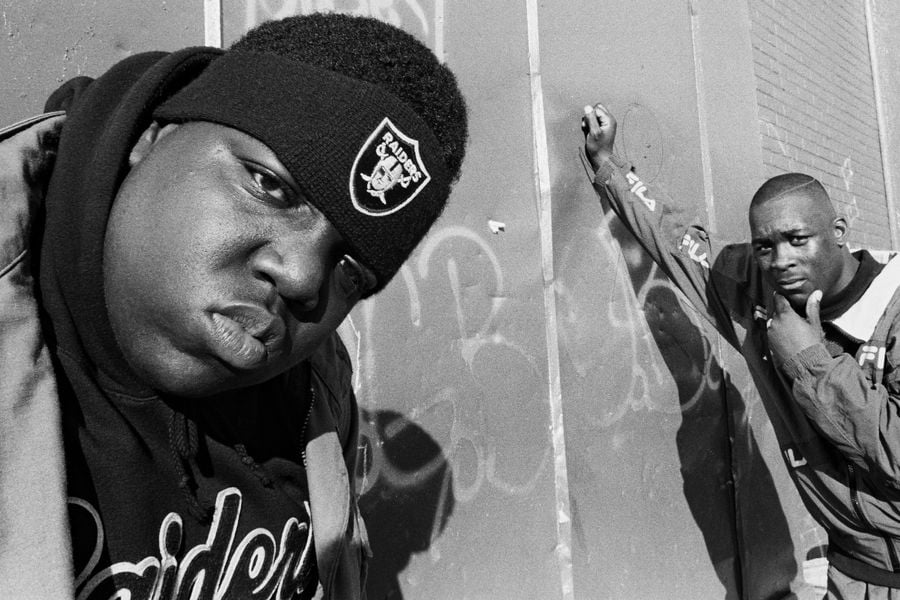In his shockingly short 24 years on this earth, Biggie Smalls (also known as The Notorious B.I.G. or Biggie) had one of the most monumental impacts on hip hop as we know it today.
Looking back, it’s easy to forget that he died so young, given his legacy and discography, especially with his mixtapes and posthumous compilation albums, the shadow of Biggie still looms large over the industry. Nelly, Ja Rule, Eminem, Lil Wayne, Game, Clinton Sparks, Jay-Z, 50 Cent, Alicia Keys, Fat Joe, and Usher have quoted and sampled him, sharing his influence with a new generation. People still know the words to his songs. People still speculate on his passing. He remains an icon in death as he did in life.
Rapping in a low tone and utilising a narrative flow that bubbled and popped like hot toffee, the Brooklyn born-and-raised rapper was signed to Bad Boy Records throughout his career, where he produced two solo studio albums before his tragic death in 1997.
One of the most notable elements of his career—in addition to his musical talents—was his involvement in the East Coast vs. West Coast hip hop rivalry, which primarily centred around Biggie and West Coast rapper Tupac Shakur. Despite being friends and then professionally acquainted, the duo grew to represent two sides of a violent coin and were associated with Bad Boy Records and Death Row Records, respectively.
Pac’s song ‘Hit ‘Em Up’ is a Biggie diss track in which he claims to have slept with Biggie’s wife, Faith Evans, provoking some of the most vitriolic rivalries in rap. Mentioning Biggie by name, this song had a large hand in exacerbating their feud and, many have suggested, provided the final straw to break the camel’s back. Of course, this was only after Biggie stirred the pot with his own diss track, ‘Who Shot Ya?’
Unfortunately, Tupac Shakur and Biggie Smalls would both meet untimely ends in the mid-’90s, only six months apart from one another. Pac was shot in a drive-by shooting in Las Vegas in September of 1996. Even amid the fierce rivalry, it’s reported that the night of Shakur’s death, Biggie called then-estranged Faith Evans and said, “Something ain’t right, Faye. Shit got fucked up somewhere along the way. But that was my ni–a.”
The last six months of Biggie’s life often aren’t discussed. Amid the anxiety surrounding Shakur’s death, an arrest for marijuana possession, and a car accident that left him with a broken leg and nearly two months in rehab, he left Brooklyn behind for a quiet gated community in Teaneck, New Jersey, perhaps fearing coastal repurcussions.
However, even with intentions to settle down, Biggie still wanted to accomplish one thing in the meantime: he wanted to make his peace with the West Coast. This was the origin of his song ‘Going Back to Cali’, a tribute to West Coast sound and a bid to quieten the hysteria. He also planned a promotional trip to California with Puffy to promote his new album, Life After Death and record a music video for its lead single, ‘Hypnotize’.
Unfortunately, his trip to L.A. may have been too soon after Pac’s death. Even after hiring additional private security detail, to set foot in the state just six months after Tupac’s death was a bonafide death sentence. And so it proved, Biggie was killed in a drive-by shooting by an unknown assailant on March 9th, 1997, in Los Angeles, California.
After his death, his album, Life After Death, was released and hit No. 1 on the Billboard charts. The remainder of his work would go on to be released posthumously, gaining the cultural traction that the rapper no doubt deserved after cementing his innovative place in history.
Even today, nobody forgets about The Notorious B.I.G., the king of the East Coast rap scene, and his music continues to influence artists today. There are few everlasting figures in music, they ebb and flow like the tides. But no matter the oceans that roll in, the image of Biggie Smalls will never erode.
